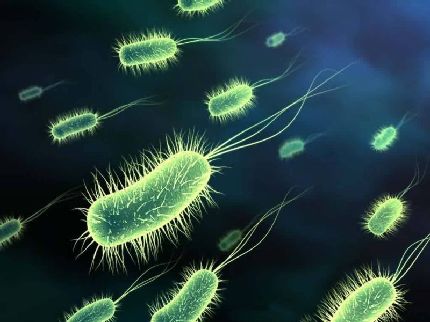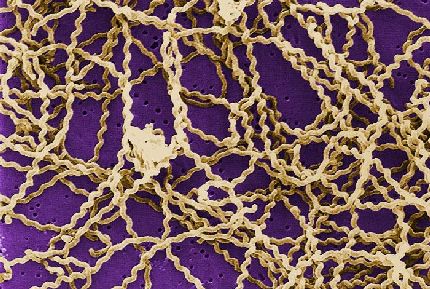Pneumococcal polysaccharide vaccine (PPV), 23-valent
Common Name: pneumococcal polysaccharide vaccine (PPSV), 23-valence (Noo my COC, etc. Fuel is ACS rides, 23-wai posts)
Brand Names: Pneumovax 23 What pneumococcal vaccine polysaccharides (PPSV) ? Pneumococcal infection is a serious infection caused by bacteria. pneumococcal bacteria can infect the sinuses and inner ear. It can also infect the lungs, blood and brain, and these conditions can be fatal. pneumococcal polysaccharide vaccine (PPSV) is used to prevent infections caused by pneumococcal bacteria. PPSV contains 23 most common types of pneumococcal bacteria. PPSV works by exposing you to a small dose of bacteria or proteins from bacteria that cause your body to develop immunity to the disease. PPSV will not treat an active infection that has developed in the body PPSV intended for use only in adults and children who are at least two years for children younger than 2 years, another vaccine Prevnar (pneumococcal conjugated vaccine [PVC] 7 .. - valence) is used, usually given at ages 2 months to 15 months. Like any vaccine, PPSV can not provide protection from disease in every person. What is the most important information I should know about this vaccine? PPSV should be brought in at least 2 weeks prior to any any treatments that can weaken your immune system. PPSV also at least 2 weeks before you go splenectomy (surgical removal of the spleen). time this vaccination is very important in order to be effective. Follow your doctor. You can still get vaccine if you have a cold or fever. In the case of more severe illness with fever or any type of infection, wait until you get better before receiving this vaccine. You should receive booster vaccine if you have a life-threatening allergic reaction after the first shot. Watch for any side effects you have after receiving this vaccine. If you need to get a vaccination, you should tell your doctor if the previous shot caused any side effects. infection pneumococcal infections (eg pneumonia or meningitis) is much more dangerous for your health than receiving this vaccine. However, like any medicine, this vaccine can cause side effects, but the risk of serious side effects is extremely low. What should I discuss with your doctor before receiving this vaccine? you should receive this vaccine if you have any life-threatening allergic reaction to any pneumococcal polysaccharide vaccine. Before this vaccine, tell your doctor if you are allergic to any drugs, or if you have bleeding or clotting disorders such as hemophilia or easy beating cancer, leukemia, lymphoma, multiple myeloma, or.
If you have received pneumococcal vaccine within the last 3 to 5 years. You can still get the vaccine if you have a cold or fever. In If a severe disease with fever or any type of infection, wait until you get better with this vaccine. Vaccines may be harmful to the unborn child and should never be given to pregnant women. However, vaccination did not have would be more harmful to the child if the mother becomes infected with a disease that this vaccine could prevent. Your doctor will decide whether to get this vaccine, especially if you have high risk of contracting pneumococcal infection. not known whether PPSV passes into breast milk or if it could harm baby. Do not use this medication without speaking to your doctor if you are breast-feeding baby. How to give the vaccine? PPSV given as an injection (shot) under the skin or muscles of the hands or hips. you get this injection in the doctor's office or other conditions of the clinic. PPSV usually given as a routine vaccination of adults aged 65 and older, heart disease, lung disease, diabetes or.
leaking cerebrospinal fluid or cochlear implant (an electronic hearing aid);
weak immune system by HIV, AIDS, cancer, kidney failure, organ transplants or damaged spleen.
or a weak immune system caused by taking steroids or receiving chemotherapy or radiotherapy PPSV may also pay attention to people age of 19 and 64 years who smoke or suffer from asthma. PPSV need at least 2 weeks prior to any treatments that can weaken your immune system. PPSV also at least 2 weeks before you go splenectomy (surgical removal of the spleen .) The terms of this vaccination is very important in order to be effective. Follow your doctor. Your doctor may recommend treating fever and pain without aspirin pain medication such as acetaminophen (Tylenol) or ibuprofen (Motrin, Advil and others) when the vaccine and for the next 24 hours. Follow the label instructions or your doctor about how much the medicine to take. If your doctor prescribed antibiotics (eg penicillin) to prevent infection with pneumococcal bacteria, not to abandon the use of antibiotics after a PPSV. Take antibiotics during the entire period of time prescribed by a doctor. Most people get only one shot PPSV for his life. However, people in certain age groups and under certain conditions of disease, subjecting them to risk of infection may have to take more than one vaccine. Before this vaccine, tell the doctor if you have received pneumococcal vaccine within the last 3 to 5 years. What happens if I miss taking the drug? With PPSV usually given only once, you probably will not be on the dosage. If you get hit again PPSV , must tell the doctor if it was less than 5 years since the last received pneumococcal vaccine. What happens if I overdose? overdose of this vaccine may not occur. What should I avoid "before or after receiving this vaccine? PPSV not be given for 4 weeks before or after a herpes zoster vaccine (Zostavax). You should receive booster vaccine if you have a life-threatening allergic reaction after the first shot. Watch for any side effects you have after receiving this vaccine. If you need to get a vaccination, you should tell your doctor if the previous shot caused any side effects. infection pneumococcal infections (eg pneumonia or meningitis) is much more dangerous for your health than receiving this vaccine. However, like any medicine, This vaccine can cause side effects, but the risk of serious side effects is extremely low Get help emergency medical help if you have any of these signs of an allergic reaction. hives, difficulty breathing, swelling of face, lips, tongue, or throat Call your doctor immediately if you have a serious side. effects such as:
swollen glands of the skin rash or itching, joint pain and general dislike;
pale or yellowed skin, dark urine, confusion or weakness;

numbness or tingling feeling in your feet and spreading upwards, severe back pain;
change in behavior, problems with vision, speech, swallowing, or bladder and bowel functions, or
slow pulse, difficulty breathing, feeling like you might pass. with less serious side effects likely to occur, such as:
low temperature (102 degrees or less), chills, fatigue,
swelling, pain, tenderness, redness, or anywhere on your body;
headache, nausea and vomiting.
a little pain, heat, redness, swelling or hard ball, where the stick This is not complete list of side effects and others may occur call your doctor. medical advice about side effects. You can tell the effects of the vaccine by the U.S. Department of Health and Human Services at 1-800-822-7967. pneumococcal polysaccharide vaccine (PPV ), 23-valence dosage information
Usual dose for adults for the prevention of pneumococcal disease: 0 5 mL dose administered subcutaneously or intramuscularly (preferably in the deltoid muscle or lateral mid-thigh) Normal infant dose for the prevention of pneumococcal disease: ..> = 2 years. 0 5 mL dose administered subcutaneously or intramuscularly (preferably in the deltoid muscle or lateral mid-thigh). with other drugs will affect pneumococcal polysaccharide vaccine (PPSV)? Before this vaccine, tell the doctor about all other vaccines you have recently received. Also tell your doctor if you have recently received drugs or treatments that can weaken the immune system, including:
oral, nasal, inhalation or injection steroid medicine;
drugs to treat psoriasis, rheumatoid arthritis and other autoimmune diseases such as azathioprine (Imuran), etanertsept (Enbrel), leflunomyd (Aral), etc., or
drugs to treat or prevent organ transplant rejection, such as basiliximab ( Simulect), cyclosporine (Sandimmune, Neoral, Gengraf), muromonab-CD3 (Orthoclone), mikofenolyatmofetil (Sellseptu) syrolimus (Rapamune) or tacrolimus (Prograf). If you use any of these drugs, you can not get the vaccine or may have to wait until other procedures completed. This list is not complete and other drugs can interact with PPSV. Tell your doctor about all medications that you are using. This includes prescription, on-the-counter, vitamins, and herbal products. Do not start a new treatment, let your doctor. where can I get more information? Your doctor or pharmacist can strattera no prescritpion provide further information about the pneumococcal vaccine polysaccharides. You can also find additional information in the local health department or the Centers for Disease Control and Prevention.



